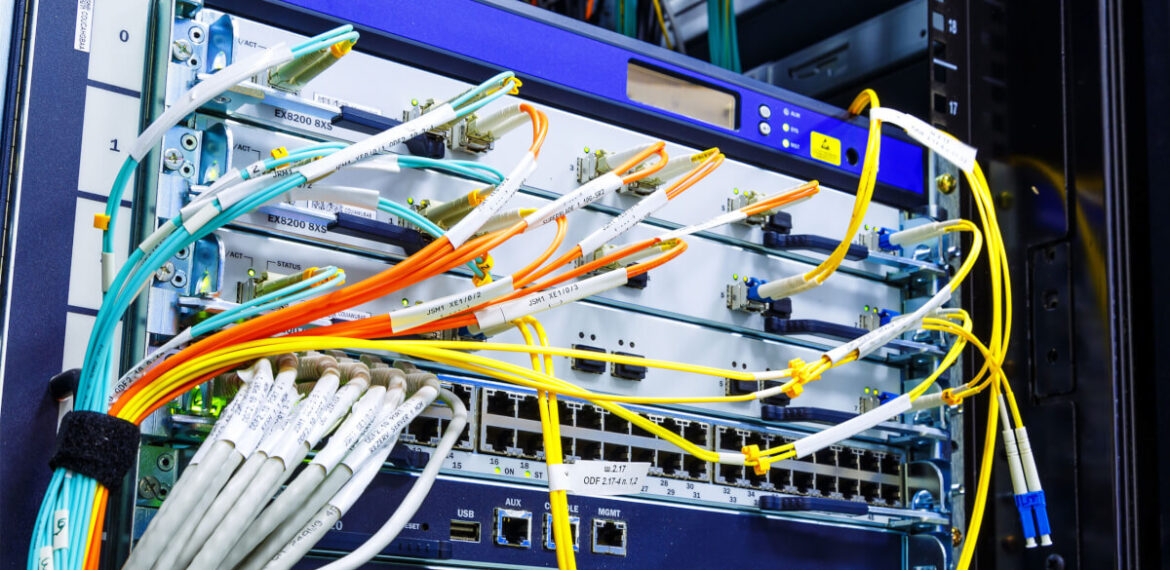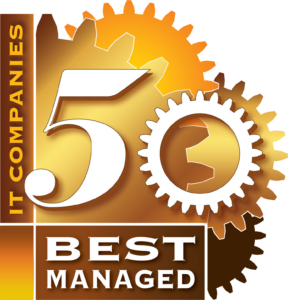
The Best IT Managed Services With No In-House Admin
The Best IT Managed Services With No In-House Admin
Managed IT services cover a broad range of different topics. But business leaders usually just want somebody to take ownership of the whole operation off of their plate.
3 Things Business Owners Want from Managed IT Services
- They want somebody that makes sure everything is working. When they come in in the morning, they don’t want to deal with IT issues. They don’t want to Google tech issues and crawl around under desks unplugging things. They just want to use their technology like any other tool.
- They want their infrastructure to be secure. They want to know that somebody is thinking about the big picture, covering all of their risks, and doing all of the things that are prudent for an organization of their size.
- They want the right technology in place.
Business owners must ask themselves:
- Are the proper tools in place within the organization?
- Are we leveraging technology to its fullest extent?
- Could we be more competitive in our marketplace with our existing tools?
- This can cover efficiency, processes, better access to information, or better data flow between systems.
- Are there things we can be doing today that will take us to the next level? And how can we leverage technology to get there?
Components of Managed IT Services
As a Virtual Chief Information Officer (vCIO) our managed IT services analyze the organization’s direction and how technology is being used from an internal perspective.
- What kind of infrastructure is in place right now?
- And are there things we can do to improve the health of the infrastructure?
The vCIO then assists in strategic planning which includes looking at the next couple of years to establish what technology will need to be placed at the software level, application level, and infrastructure level. That might be servers, workstations, or network devices. What can we put in place to make sure we hit our goals in the next three to five years?
Cost of Managed IT Services
The cost of managed IT services depends largely on the complexity of your infrastructure and how many users are being supported.
IT managed services are priced in a couple of different ways. And when we talk to clients about what they’re spending now, we see a pretty broad range. We see some very low costs and some higher costs.
Reactive IT Providers
What tends to happen is when we’re talking to somebody that has a low-cost provider, they tend to be reactive. At the end of the day, they don’t have enough in their budget, they don’t have enough time to be able to get anything other than the reactive items.
They fix things when there’s a major fire, but they’re not managing risks behind the scenes. They’re not actually going in and doing the maintenance. And what that means is that the business is exposed. There are hidden risks that could cause problems for the organization, whether it’s a security breach or whether it’s a hardware failure.
If there isn’t enough time to do the proactive work that keeps everything working, eventually there will be a problem.
When we analyze these vendors and the various price points, the other thing worth considering is that the check you write to your vendor isn’t actually the final, or true, cost of IT.
The True Cost of Managed IT
What’s the cost of downtime to your organization when you have to call IT? If you have an issue and have to call in somebody to fix it, what’s the cost to your business if there is an outage?
Hidden Costs of Managed IT
You look at the risks to your business, for example. If nobody’s doing maintenance, if nobody’s managing security, that leaves your business exposed. What’s the cost of that risk? It’s hard to put numbers around some of those things and really quantify them.
Let’s say you have 30 or 50 people working at your organization. If those people aren’t working, those costs add up pretty quickly. And if you think about each of those people spending even just half an hour dealing with IT issues every month, what is the cost to your organization when they do that? The check you send your vendor really starts to dwarf in comparison to those other things.
The Cost of Organizational Risk
The biggest thing people overlook when they look at IT costs is the cost of risk in their organization. There are lots of things that, if no one is doing maintenance, create hidden risks in your infrastructure.
We’ve talked to a lot of businesses over the years about how they manage technology and how they’re taking care of their infrastructure. Often, someone who isn’t happy with their infrastructure management or the results that they’re getting isn’t quite ready to invest in a fully managed IT service.
Invariably, however, they come back after a year or two. Usually after some kind of bad experience. That’s when they make the decision to move forward.
We talked to one client, for example, twice over two years. In January of one year, they were looking at making some changes. They weren’t totally happy, but they weren’t quite sure they were ready to make the investment.
About a year and a half later, they called us up because they had been hit with a data breach. Their systems were compromised and they were dealing with ransomware. And suddenly the cost of IT managed services looked a lot cheaper. They decided they were ready to make the investment.
Investing in Managed IT Services
Again, one of the things that people overlook in determining whether they need IT services or not is the hidden risk to the business.
If nobody is proactively looking after your infrastructure, there’s risk in your business that should be addressed. And it’s pretty hard to put a number on what that cost of the risk is.
Managed services lets businesses offload IT related tasks such as IT monitoring and managing to a team of experts, called services providers. The managed services model is a strategic method of proactive management, with the purpose of improving operations and helping businesses fulfill their IT needs. Businesses are provided with access to knowledge bases and best practices.
Delivered Services
Delivered services can include security, cloud computing, connectivity and bandwidth, data backup and recovery, virtualization, desktop and communications, mobility, as well as technical support. Compared with in-house models, managed services makes it easier for businesses to acquire new technology and stay up to date with technology.
Benefits of Managed IT Services
- Peace of mind with security and expertise:
- No need to hire additional support staff
- Reduced operating costs & predictable spending
- Access to professional IT staff
- Faster response times
At CopperTree Solutions, we offer a monthly fee for our managed services, which means that you will receive superior quality of service with a reduced cost to administer. We understand that your needs are specific, so we work with you to choose the applications and services that make the most sense. Click to learn more about how Managed IT Services can help your business.



